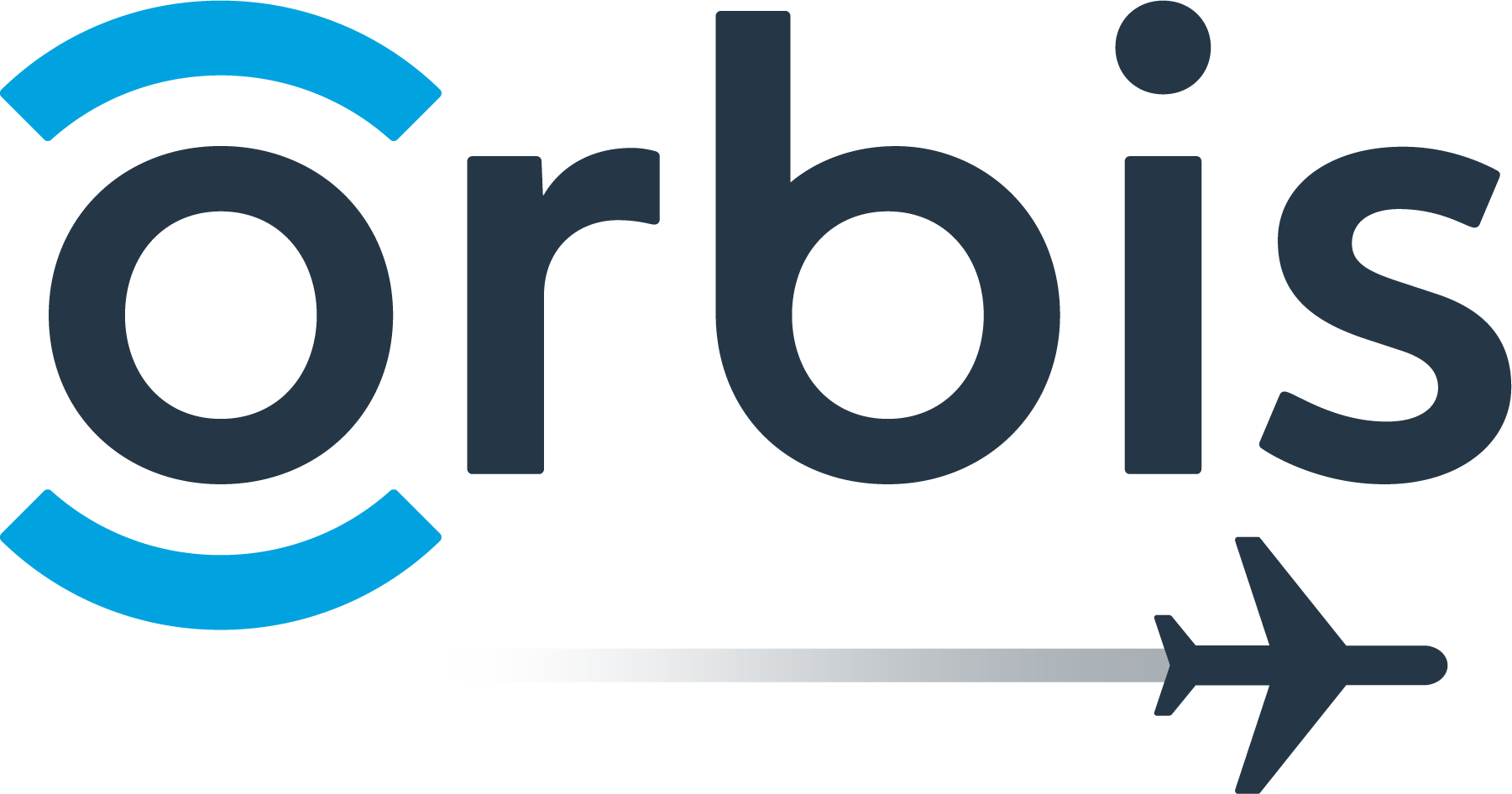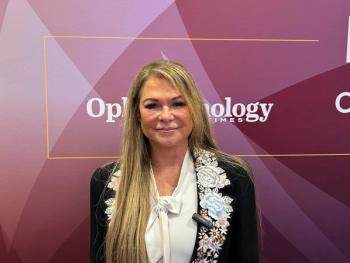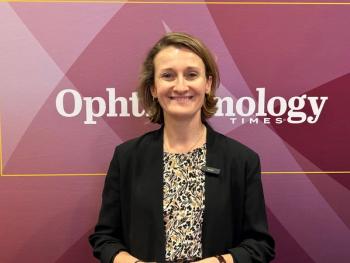
Technology and training for cataract surgery

Maria Montero, MD, of Orbis sits down with David Hutton of Ophthalmology Times, to discuss technology and training for cataract surgery, including simulation, and telementoring.
Video Transcript
Editor's Note: This transcript has been lightly edited for clarity
David Hutton:
I'm David Hutton of Ophthalmology Times. I'm joined today by Dr. Maria Montero of Orbis. We will discuss technology and training for cataract surgery, including simulation, and telementoring.
Cataract surgery is one of the most frequently performed surgical procedures, but there can never be too much training. Let's talk about some of the technology and training for cataract surgery. First off, how has this technology improved over the last several years?
Maria Montero, MD:
Well, David, as you know, cataract surgery is one of the most reproducible surgeries that exist. So the technique itself, it has been quite the same for several years, which is phacoemulsification, for cataracts that are not very hard. And then either extracapsular or small incision cataract surgery. Cataracts are very hard with people that have had them for years and years. So what has changed really is how to achieve a 20/20 vision faster, maybe on the first day of recovery, and to have all the patients get this result quicker. So that being said, what has changed is the machines, the technology, that has been around the technique itself. So for phacoemulsification, for example, what has changed is the intraocular lens calculations, the intraocular lens materials.
Nowadays, people really want to have their close vision fixed too, so that they don't have to wear glasses. And also an intermediate vision. So then, ophthalmologists have developed new intraocular lenses that are not only monofocal meaning that the patient can see from afar. But there are either three focal which has the near, the middle, and the far side. But also extended depth of focus intraocular lenses, which are lenses that react to whatever your eyes are watching, right, so that they can help you see whatever it is that you're working on. Whether if it's very close, near, or far. And also, in terms of the results that you see the next day, the inflammation, then we have created smaller incisions for the surgery. So we are up to 1.8 millimeters to have cataract surgery, which is very, very little. It's amazing to see how all the instruments go into the eye, by this incision that is so, so, so tiny. So, I think that that's mainly what has changed in terms of the surgery itself.
David Hutton:
What are some of the challenges that young ophthalmologists face when it comes to performing cataract surgeries?
Maria Montero, MD:
I would say access. Access to knowledge is also one of the many challenges because in a lot of the countries that we work, maybe they can get the education but they cannot attend congress, they cannot keep up with new technology, or they don't have access to the latest technology. So they're just using the technology that has been in their hospitals for years and years and years, and not being able to try the newer technologies.
Also a big lag is, for example simulation. In a lot of countries, they don't have access to simulation tools, which are very much to use these days to avoid patient complications to lower cost of complications. And simulation also empowers the resident in doing their own surgeries. Of course, It's not the same to have your first hands on experience on a real, breathing patient than doing it through simulation when you know that nothing's going to happen if you mess up.
So people all over the world have a lack of access to these tools for the training, which is one of the main things that we are trying to close the gap on.
David Hutton:
What are some of the key technologies used today in this simulation training for this procedure?
Maria Montero, MD:
Well, there are different kinds of simulation. We like to escalate them on the fly in our hospital. For example, we start with virtual reality simulators, which is like a video game right. So either you are looking through a microscope that is modeled exactly after the microscope that you would see in a real OR. All the tools that you grab, all the images that you see, it's pretty much the same. So you're in a different world, which is a virtual eye in a virtual OR, let's say. So you go in and you do the different steps of the surgery, you even start with abstract exercises, which is more like a video game. Which is just trying to point at little dots or trying to move one thing from another, not realistic, but it's abstract. So you get your tremor training done, you get your capsulorhexis training done, and then you move on to exercises.
Like a video game, if you do good, then you go on to the next level, and then you move on to realistic scenarios. And you try that out. And once you've done that, what we like to do is we move the training to the operating room. So in a real operating room with a real machine, with a real nurse as the real anesthesiologist, which are also doing simulation training, we create this scenario where the only thing that's fake is the patient. So the only thing that is not real is the artificial eye, which is plastic.
And we simulate absolutely everything on them. It's amazing to see how you can practice with artificial plastic eyes that have the exact same measurements as the eye does. And all these developers are trying very, very hard to improve the texture, the feeling, of each part of the eye. So it is becoming more and more similar to the real thing. So then you escalate your training ... you've trained everything is real, except the eye. So then, of course, when we move the same residents to a scenario that's familiar to them, It's exactly the same. But the only thing that's different is, oh, there's a human there, there's a human down there right.
So that's the difference. So it makes them more confident, because they have tried this scenario before, right? So all these different tools are really helping a lot on training.
David Hutton:
Ultimately, how does this help them become more proficient [and] provide better outcomes for their patients?
Maria Montero, MD:
Well, when you practice a skill, so it's a skill, it's a it's a mechanic skill, when you try it again, and again, and again, and again. and again, in a reproducible environment, of course, you get better at it. You can get your scores, so you get immediate feedback. And you can see, and people – I mean, we're human, and we like to compete, so all of the residents really enjoy when they can see their scores, and they start to compete with each other. So that's, that's very, very, very fun, too. And they get better because they're doing it again.
They're training in a mechanical skill that they're doing over, and over, and over, and over again. But also in their confidence. Being confident in an operating room, I think It's one of the most important things, because you're not overthinking everything, you're not in your own head. So whenever you're confident in a procedure, you know, the steps, you've practiced the steps, so your mind already knows what's going to happen. You get, of course, you get to like your hand-eye-coordination, you get your hand-eye-brain-coordination done before you go into a real patient. So you are more confident, you are able to do the process.
But also it's very good for the for the teacher. Because this way, if I'm teaching someone and I see them doing a procedure, on a simulator, and they do very good, they have amazing results. They listen and they complete the procedure in a very well manner, then I'm more confident on letting the same resident do a surgery on a real human being. Instead of me having a new resident in the operating room, which I don't know, I don't know how his hands are, how his tremor is etc. Then maybe I'll even be more nervous during the surgery and trying to be like "nah, no, don't do this. Don't do that. Stop" etc. Instead of giving them the confidence to perform the surgery by themselves, and then maybe just okay, you need a little refinement here and there.
But it's amazing to see them going from knowing absolutely nothing to being very proficient in the exercises that we put them [in] which clearly translate when we see them do the surgeries for real in real patients.
David Hutton:
Tell me a little bit about telementoring. How can this help young ophthalmologists?
Maria Montero, MD:
Telementoring is, it's really great. I say that it's like, you're being the guardian angel of the doctor that is in another country. Because they put their air pods or whatever they have available, and they can hear you. And you're watching the image of the surgery through the microscope, through the system, through some platform, or a similar platform. You're watching them do the surgeries, and they're listening to you. So even if you're not there, physically, you can still help them [by] telling them tips – move your hand this way, move your – because we also have another camera, we not only see the eye, the microscope, but we also have another camera focusing on their hands.
Because it's very important to see the position of the surgeon and see how they're moving outside of the eye, maybe there's something that has to do with whatever issue they're facing. So we watch their hands, and we watch the surgery. So from very afar, we can teach them and we can counsel them on what they're doing right what they're doing wrong. Stop. Correct. Tell me your parameters. We also can see the parameters from afar. So It's really like being there, the only thing that's lacking is the lack of touch. But other than that, it's really like we're there.
We can telementor them in several ways in real surgeries, but also in simulation, which is really great. It's part of what the pandemic taught us, that we can still teach even from afar. So we have, we have several programs, we have an upcoming program for Chile later this year, when we send the artificial eyes over, and then we telementor the students with artificial eyes. So again, we can see them progress under the microscope, we can teach them from afar, and then they can practice, and practice, and practice until they get it right. It's completely different than just trying new methods on a real patient. Because for example, this course is going to be on iris suturing or [inaudible] on more advanced techniques that you really don't want to try for the first time on a real patient. So it's a very safe way to do this.
David Hutton:
At what point in a young ophthalmologist's career, should they receive this training and this telementoring?
Maria Montero, MD:
I think from the very beginning, as soon, as soon as possible. Because it helps you throughout your training, of course it gives you – it will give you more confidence in absolutely everything. And there is simulation for, I would say most of the subspecialties in the eyes.
So, there's simulation for retina surgery, surgical retina, medical retina, for phacoemulsification, for a small incision, for strabismus, for glaucoma. So there's a lot of good materials out there to try out, and really, why not? It has been proven to lower the cost of complications for hospitals too. So I see it as a win-win situation, of course. Cost less, and obviously patient safety. So definitely.
David Hutton:
Where can they turn for additional training or telementoring to perfect their skills for cataract surgery?
Maria Montero, MD:
If they need any guidance, of course, they can contact us through our website at orbis.org. And we also have our, our platform, online platform. Which is cybersight.org. And on cybersight we have everything – I hope. And if we don't have it, let us know what we don't have.
We have videos. We have regular videos, we have 3D videos on all the techniques. We have lectures. We have symposiums, we have tailored courses, so they can really search for a lot of material there. And we also have a part on cybersight that is purely on simulation. So we have a simulation manual. So you download this manual and on it, it has our best recommendations.
From having absolutely nothing and just wanting to have a simulation room or wet lab in your hospital. We tell you what space we recommend to have, what materials to get where to buy the consumables, where and how to give feedback, because it's very, very important to give feedback. And to get feedback on all your trainings, of course. What is not measured cannot be improved, right? So feedback tools are there. We have all the contacts and all the links for all the eyes that we use, we give recommendations on which are our favorites for different techniques.
So everything is there. And if it's not, again, contact us through Orbis.org, or at my email, I'm happy to help and guide them on this path to get them the best learning experience, of course.
David Hutton:
Lastly, is there anything perhaps that I haven't yet asked that would be important to note?
Maria Montero, MD:
Well, last but not least, it's very important to know that training is also a team practice with which we love Orbis. Because it's not only about the ophthalmologist that's doing the surgery. It's about the team, the eye care team. So we really aim to train nurses, anesthesiologists, and [inaudible] for all of us to work together as a team for the sake and the good outcome of a patient. We all have to work together.
And I think that that's a very important thing that a lot of time gets forgotten. Like everybody wants to just do their little part and not work together and not talk to each other, which I think is one of the most important things [while] doing a surgery.
Newsletter
Don’t miss out—get Ophthalmology Times updates on the latest clinical advancements and expert interviews, straight to your inbox.














































.png)


